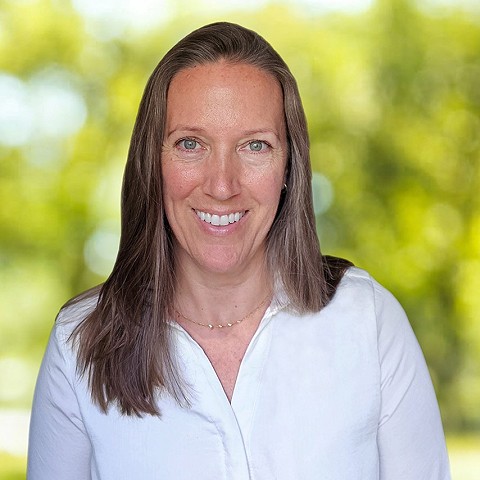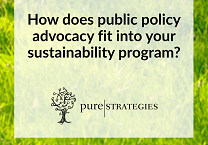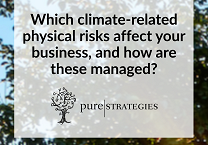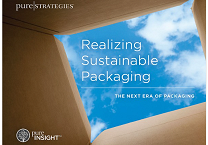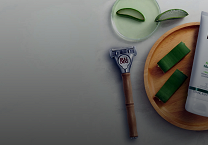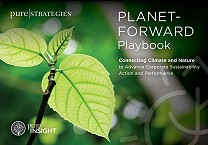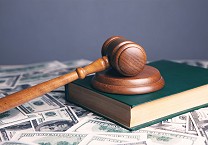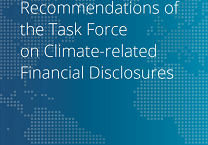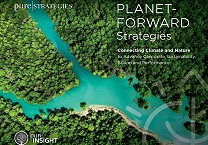Sustainable Seafood: One Fish, Two Fish, Red Fish, Green Fish
by Cheryl Baldwin, PH.D.
19 February 2014
Happy Birthday to Dr. Seuss on March 2nd!
 One fish, two fish
One fish, two fish
Red fish, green fish
Sick fish, well fish
Frankenfish, farm-raised fish
Some fish you should not eat
Others that are a treat
From fish caught with a dolphin
To fish caught far too often
A glut of boats in the sea
Some fish caught responsibly
Knowing which are ideal
Helps you enjoy your meal
Seafood stands out for the level of its progress toward sustainability. Even Greenpeace praises retailer advances in responsible sourcing. Notable achievements include processor High Liner Foods sourcing 99 percent of its seafood sustainably and Walmart obtaining 76 percent from sustainable sources, both with a commitment to reach 100 percent. While these successes provide reasons for optimism, pressing issues remain, demanding even greater engagement.
Over 75 percent of the world's fish are fully exploited or overexploited, and 90 percent of all large fishes have disappeared from the world's oceans. There is significant concern that such rapid extinction will lead to broader collapses of ecosystems at a global scale, threatening food supplies and livelihoods.
This threat played out in Newfoundland, Canada where cod fishing was a thriving business until 1992. At that point, the species reached commercial extinction. Overfishing altered the aquatic ecosystem to such an extent that the cod has not yet recovered.
Success In the Seas
The Canadian experience of lost businesses from the collapse of the cod fishery helped push the food supply chain into action. Food processors, retailers, and food service companies across the globe have established sustainable seafood programs that leverage guidance on which sources use sustainable fishing practices. This includes avoiding overfished species and those fished with destructive practices.
The Monterey Bay Aquarium, the Blue Ocean Institute, Greenpeace and other organizations maintain research-based lists that categorize fish as “red list" (avoid) and “green list"(preferred). Red list fish include orange roughy, sharks, and many others. In addition, there are certification programs that evaluate the sustainability of specific fisheries. Companies often specify procurement of fish certified as sustainable by leading programs such as the Marine Stewardship Council (MSC) and look to avoid red list fish.
In February, McDonald's was the first food service company to begin labelling its Filet-O-Fish sandwich with the MSC sustainability seal as the wild-caught Alaska Pollack in the sandwich, and all other fish sourced by the company worldwide, are MSC-certified. Many companies are pursuing similar programs. McDonald's and others use purchasing standards that require transparency to the source in order to avoid red list fish and/or require certification through programs such as MSC. Purchasers sometimes collaborate with organizations such as the Sustainable Fisheries Partnership orFishWise to work directly with fisheries not yet in compliance improve their practices and meet requirements.
These efforts are helping critical ecosystems and fisheries. MSC reported that by 2013, 13 fisheries have completed stock improvements to reach best practice levels and 22 fisheries have completed habitat and ecosystem improvements. The World Bank calculates the potential economic benefits from rebuilding 17 overfished stocks in the U.S. to be $567 million - nearly three times the net present value of the fisheries.
The Growth of Fish Farms
It might be surprising that the fish on our plates are almost as likely to come from a farm as from the sea; with over 40 percent of food fish obtained from aquaculture. Aquaculture's importance in the market is continuing to grow with stocks expected tonearly double by 2030 and largely come from developing countries. Farmed fish will then supply over 60 percent of the fish we eat.
Sustainable seafood programs must effectively address the growth of aquaculture and its unique challenges. These include the use of wild-caught fish as feed, fish illness and welfare, environmental pollution, the cultivation of genetically engineered fish, and insufficient regulatory controls. For these reasons, the red list aquaculture species to avoid are Atlantic salmon and imported shrimp. The Global Aquaculture Alliance'sBest Aquaculture Practices (BAP) program parallels the MSC's as a certification option and is often used as a starting point for purchasers seeking sustainable options.
Food retailer Hannaford is one of many grocery companies sourcing sustainably farmed seafood. Hannaford leads its competitors by already sourcing all of its seafood from fully traceable and sustainable sources, including all farmed fish certified by BAP. Hannaford's program includes purchasing standards that detail requirements for wild-caught and farmed fish (BAP certification) that are fresh, frozen, or shelf-stable. These are supported by complete transparency to the source, ensuring that sustainability is an ongoing commitment for suppliers. This may also involve partnering with a third-party to help suppliers improve specific practices in order to meet the company's requirements.
Widespread sustainable seafood sourcing programs have propelled progress. But there are still too many boats fishing too few fish in the oceans and too many species and ecosystems near extinction. The rapid growth of farmed fish in developing countries also demands closer scrutiny.
While sustainable seafood remains a work in progress, the outlook is promising. Greenpeace saw the highest scores and highest participation levels ever in its latest, seventh review of U.S. retailer performance in seafood sourcing. Clear purchasing standards with annual supplier engagement that reach back to the source are great starting points and best practices ready for broad adoption – not just for seafood, but also for other materials and ingredients.
Not all progress rests in the hands of the supply chain – consumers need to take the time to understand and seek out the best options when seafood is on the menu. If sustainable options are not available, grocery stores and restaurants need feedback that the expectation is for nothing less than sustainably sourced seafood.
Note that the terms fish and seafood are used interchangeably to refer to fish, crustaceans, and mollusks consumed for food.
Read about the Stonyfield Farms Sustainability program here.
For more information about seafood: www.fishwatch.gov
Infographic courtesy of One World One Ocean
This is the second-annual Dr. Seuss-inspired blog to celebrate his fun and insightful books for his birthday, March 2. Last year's Dr. Seuss blog, Green Eggs and Ham: Sustainability Pillars for Animal-Based Food Production, discussed animal welfare in the food industry.

Written by Cheryl Baldwin, PH.D.
Cheryl Baldwin, Ph.D., is a Vice President of Sustainability Consulting for Pure Strategies where she partners with corporate clients to develop and execute sustainability strategies to improve performance across retail, food and agriculture, home and personal care, and cosmetics industries. She also leads the firms’ global market research to generate new insights to accelerate business transformation.
Cheryl’s recent projects include helping build a leading nature strategy for Toyota Motor North America, developing sustainability goals for TAZO, creating a sustainable packaging strategy and implementation tools for Walmart, and advancing a sustainable chemistry program for Sephora. Cheryl also worked with industry groups to support broader impact including, FMI, the food industry association, and the National Retail Federation (NRF).
Cheryl authored Pure Strategies’ market research reports: Planet-Forward Strategies, Connecting to the Farm, Reaching the New Corporate Frontier, Advancing on the Path to Product Sustainability, and other reports. She wrote the book, The 10 Principles of Food Industry Sustainability and is the lead author/editor for two additional books on sustainability, Greening Food and Beverage Services and Sustainability in the Food Industry and holds U.S. and international patents.
Prior to Pure Strategies, Cheryl led the life cycle research and sustainability standard program for the non-profit ecolabel organization Green Seal. Cheryl also worked in Research and Development for Kraft Foods, Inc. where she was involved in all phases of R&D from novel ingredient development to global product commercialization. Cheryl holds a Ph.D. and M.S. from Cornell University and a B.S. from the University of Illinois, all in Food Science.
Cheryl has been named one of the Top 50 Women Leaders of DC for the second consecutive year, based on a methodical review of women executives and leaders across the area. She was identified for her career track record, including her leadership position at Pure Strategies. The recognition came from Women We Admire (WWA), a membership organization of over 1,200 of the most accomplished women leaders in business, law, consulting, education, non-profit and other sectors. based on a methodical review of women executives and leaders across the area. She was identified for her career track record, including her leadership position at Pure Strategies. The recognition came from Women We Admire (WWA), a membership organization of over 1,200 of the most accomplished women leaders in business, law, consulting, education, non-profit and other sectors.


